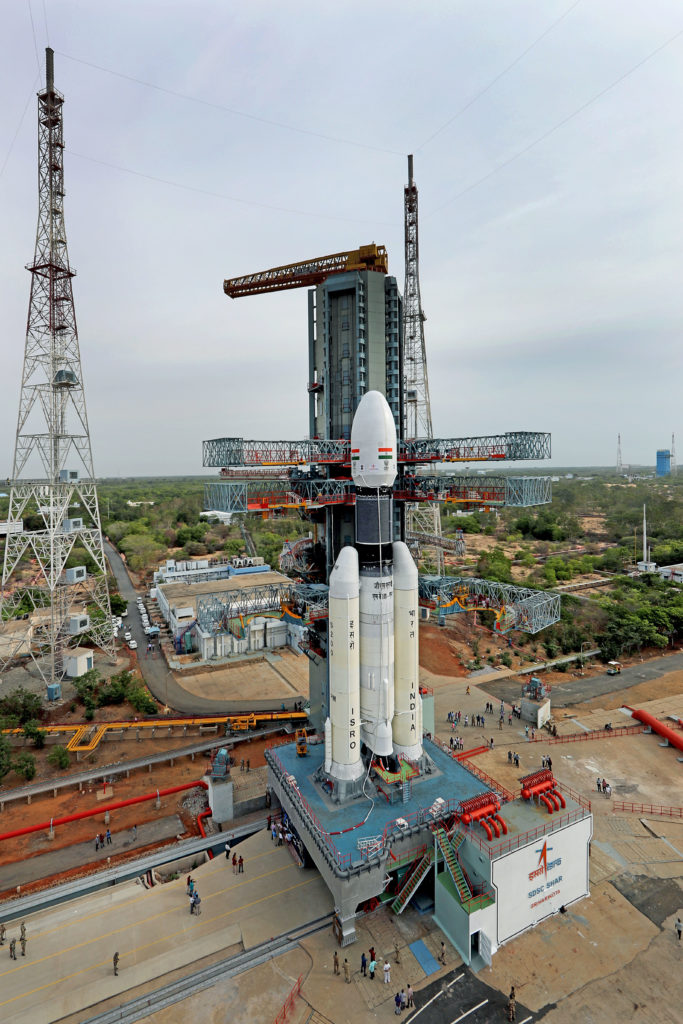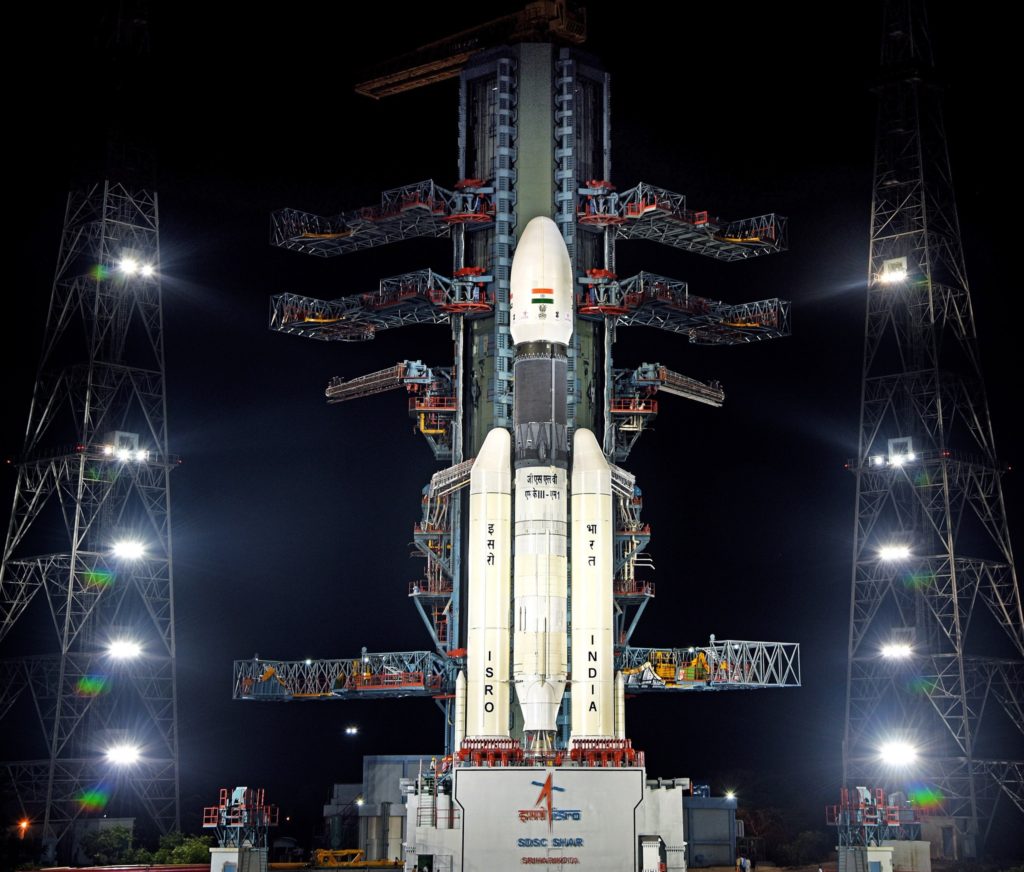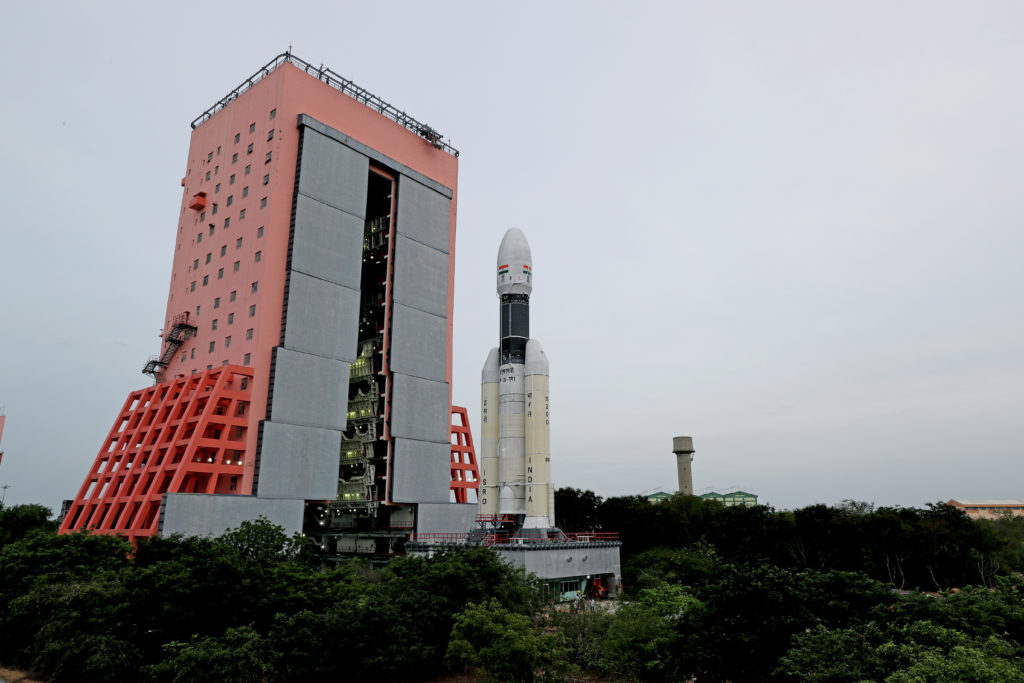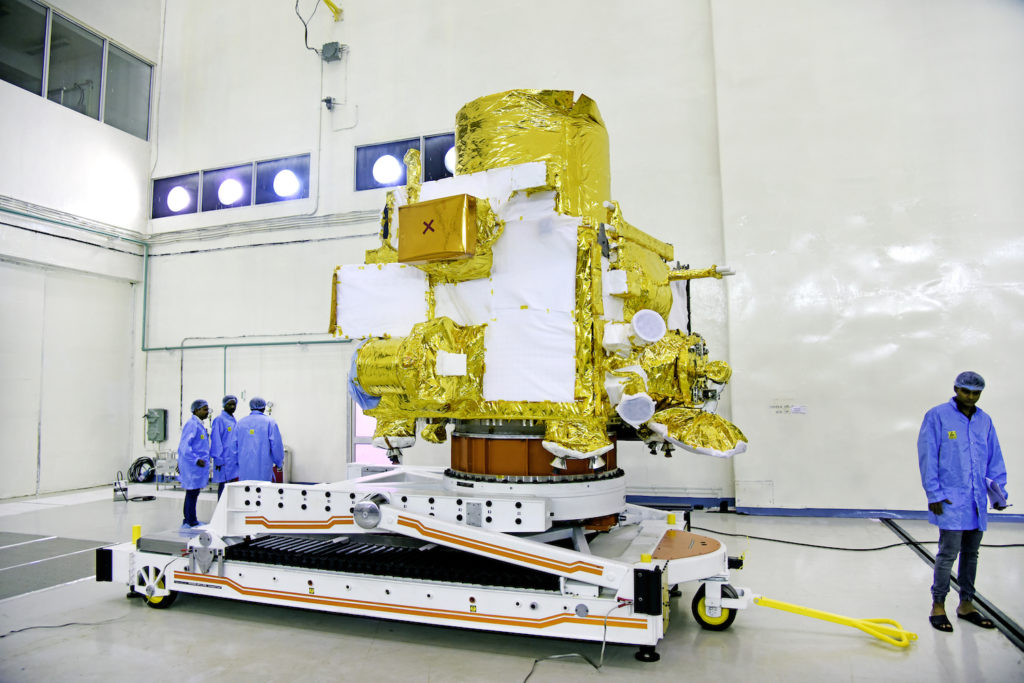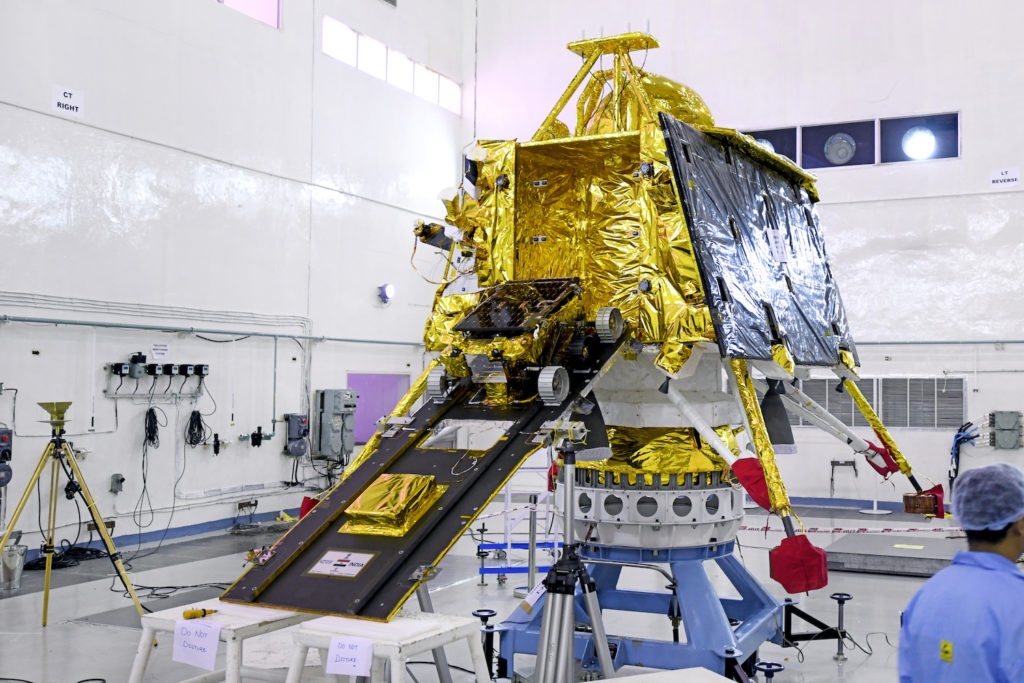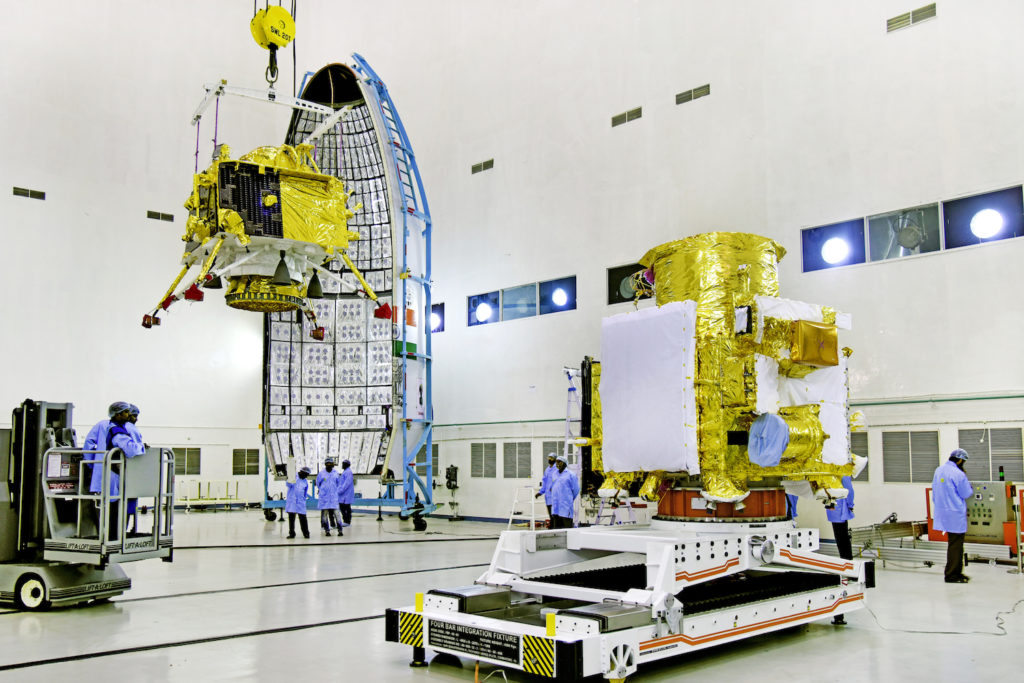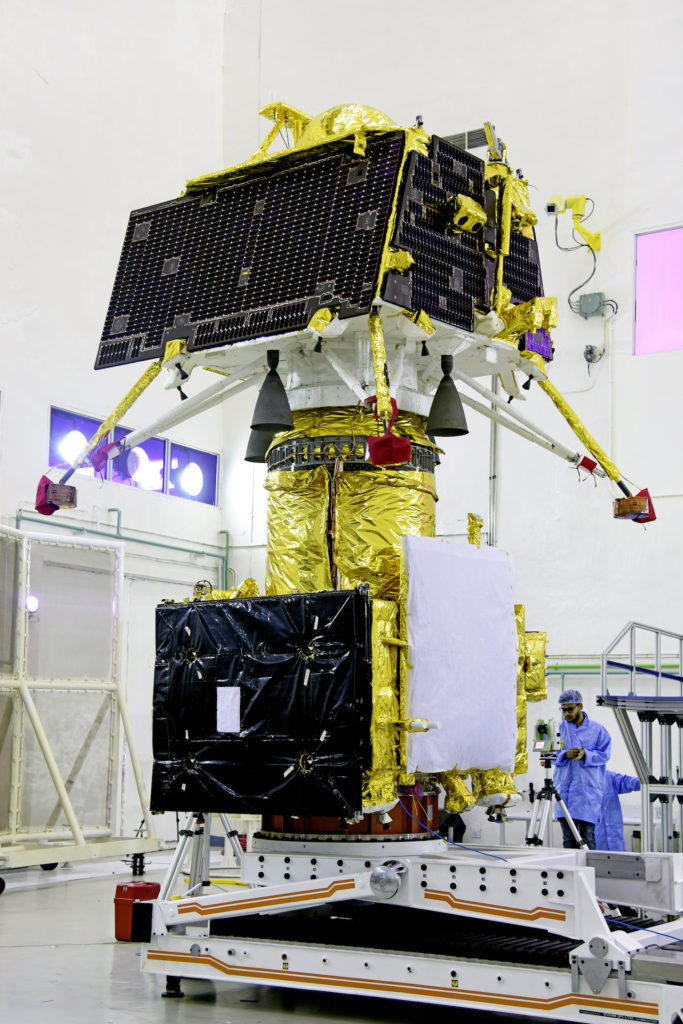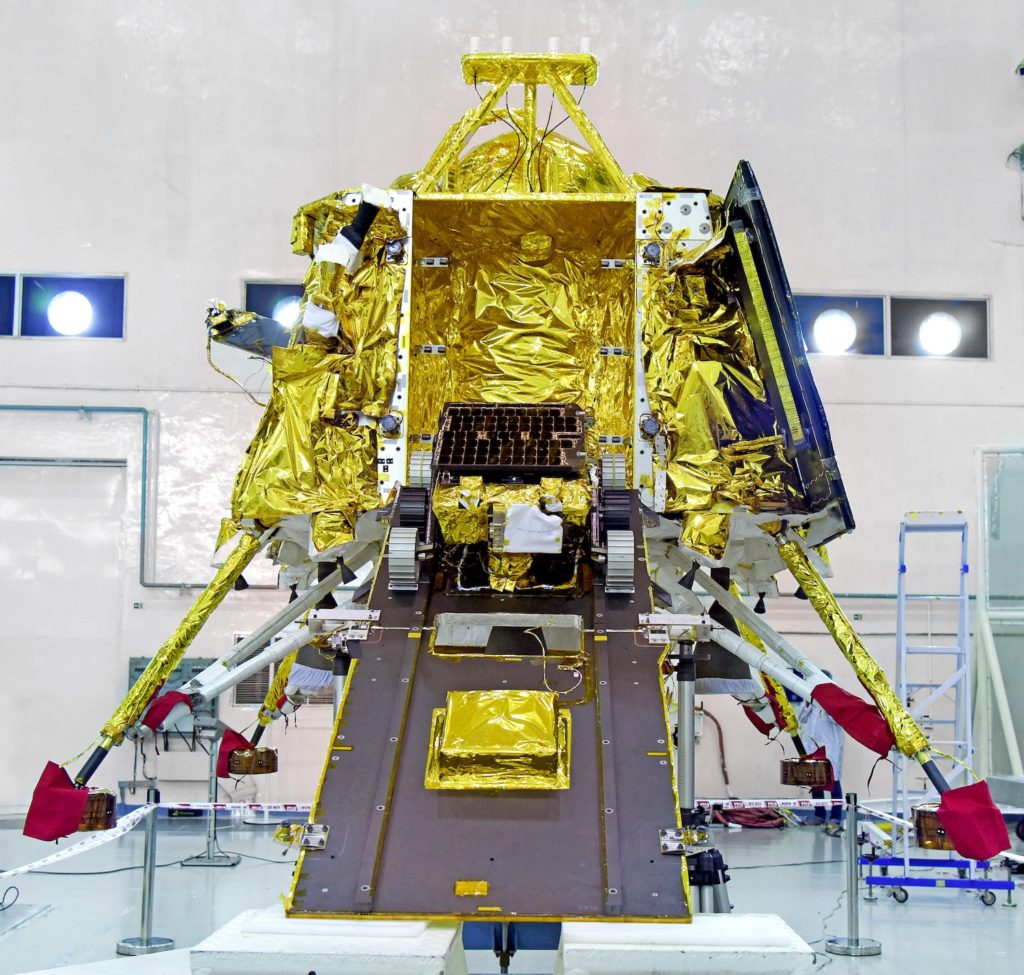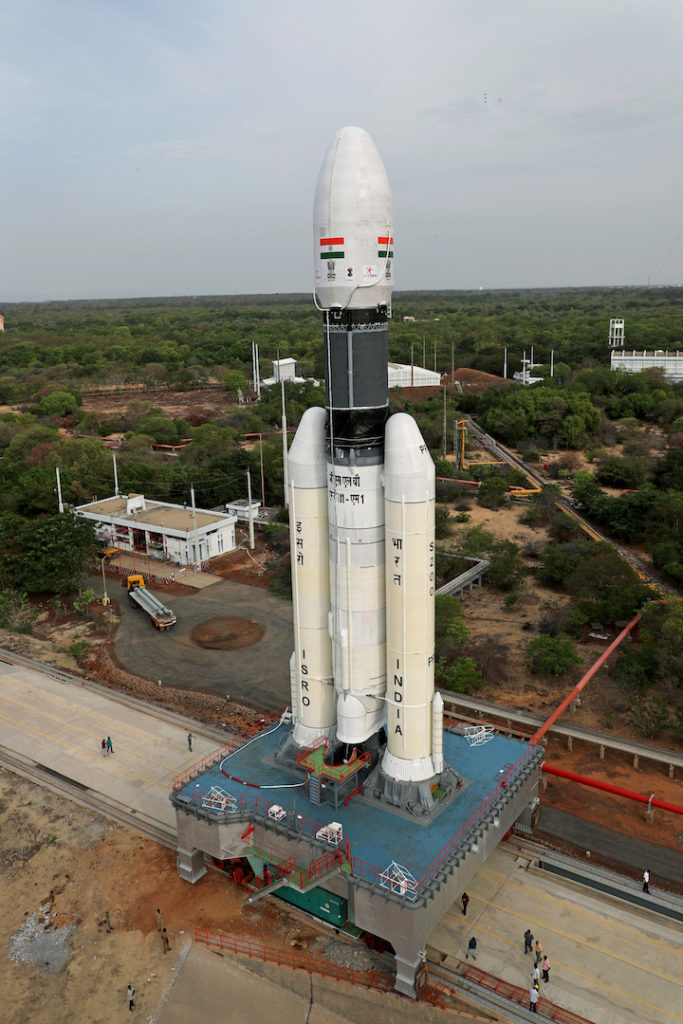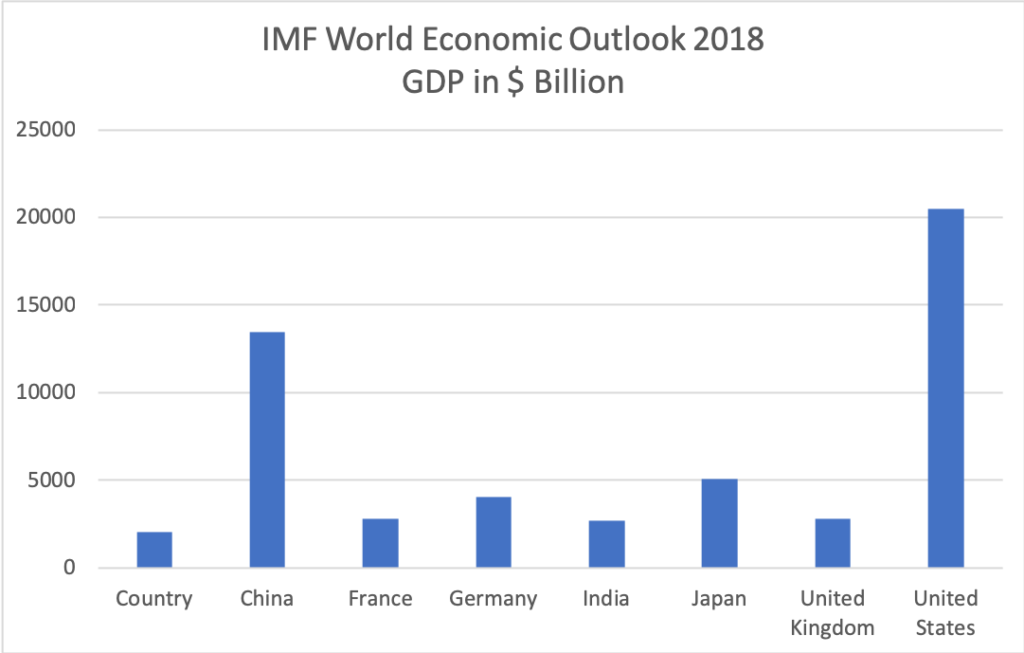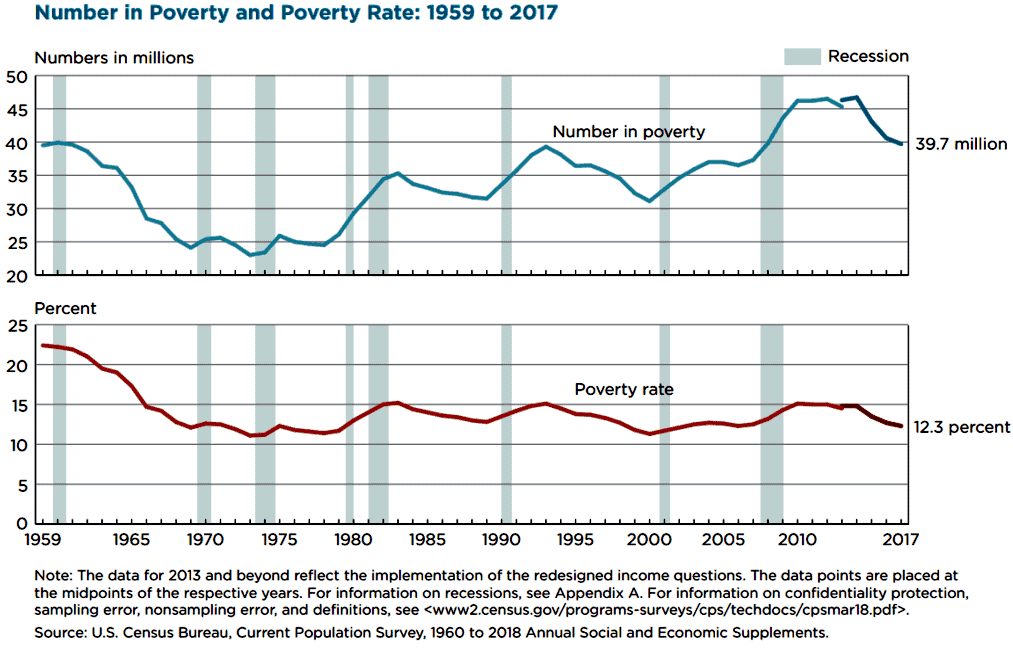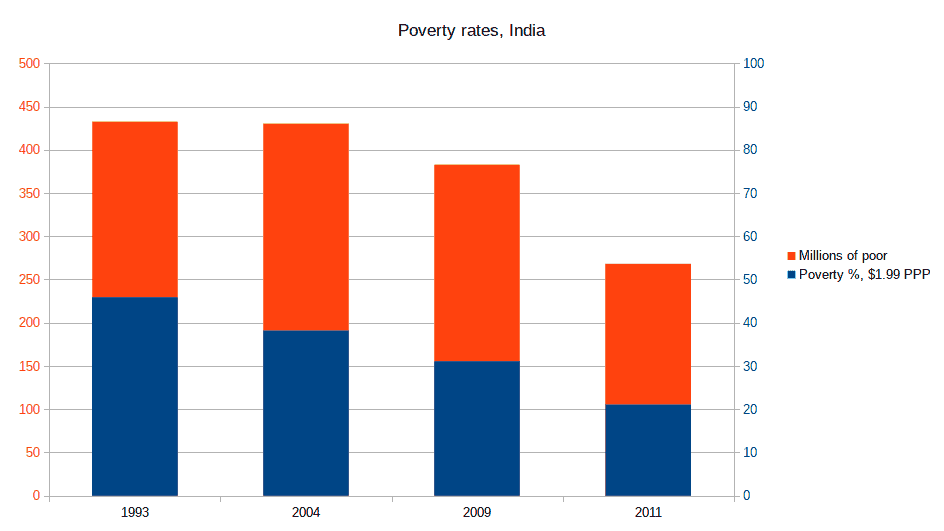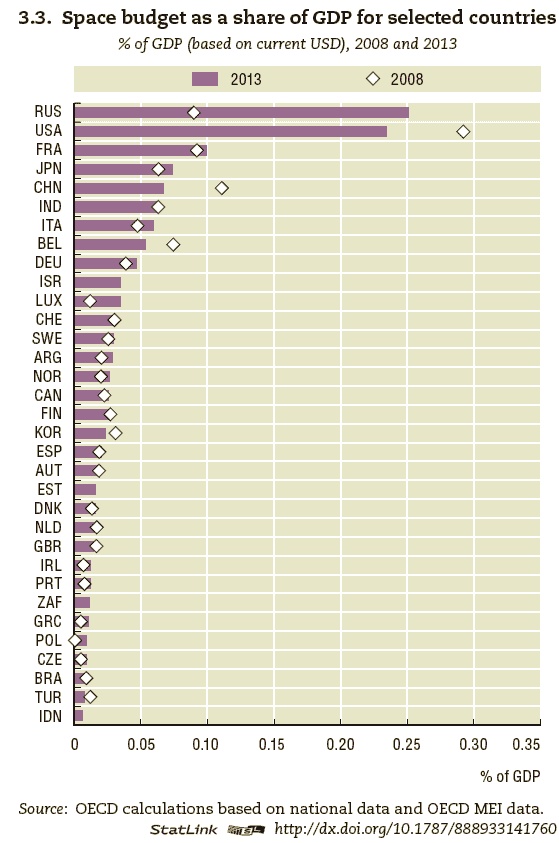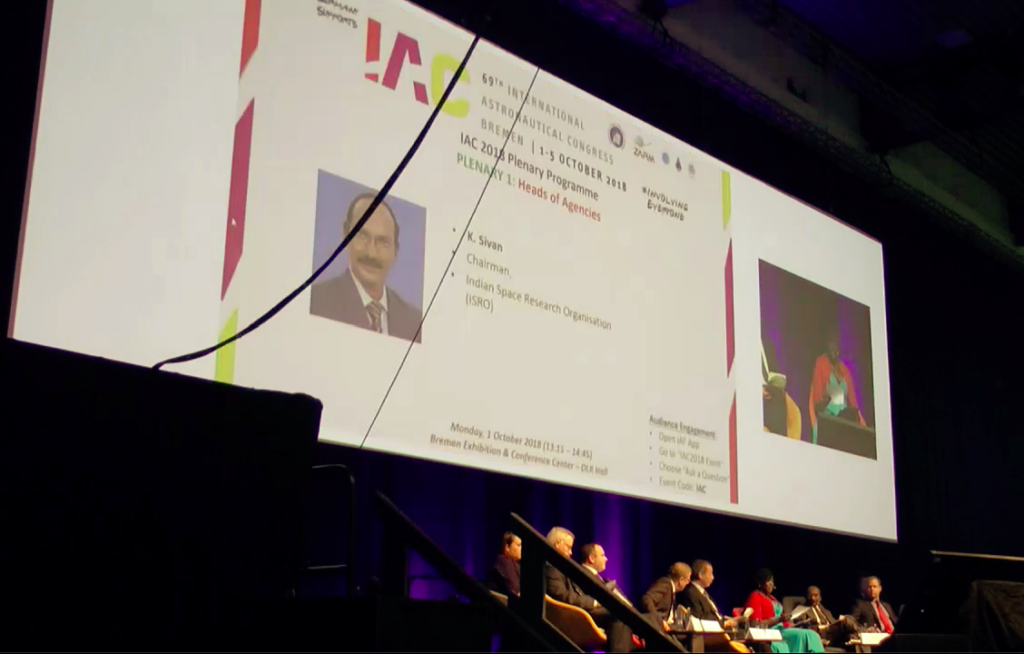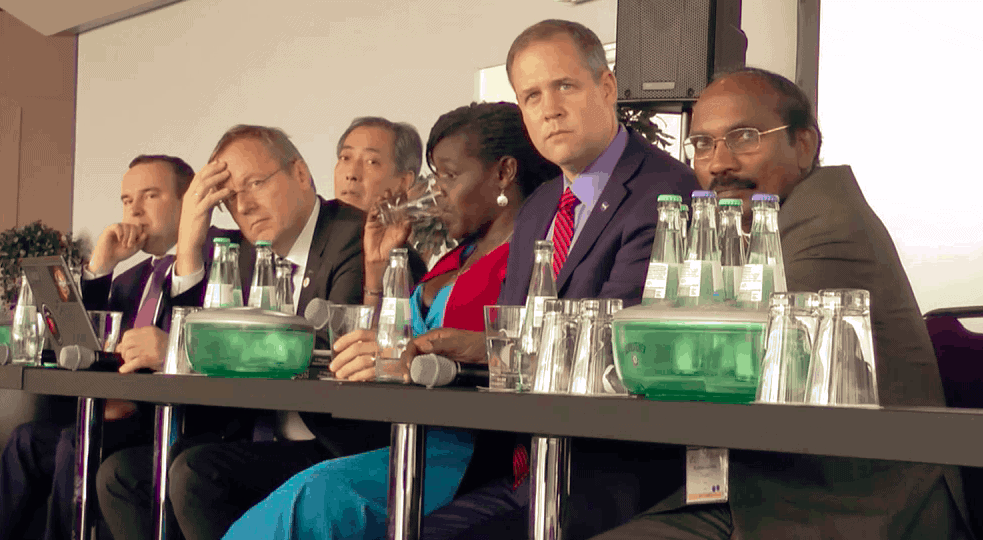Pragyan Touchdown. – Scheduled for 01:55 IST on 7 September 2019
[ycd_countdown id=5360]
T+
Successful Launch on 14:43 IST on Monday 22 July 2019
Second Attempt: Monday 22 July 10:13 BST (14:43 IST)
First Attempt: Sunday 14 July – 22:21 BST. ** Launch aborted at T- 56M 24s**
Reason for abort: The third stage of the GSLV Mk3 uses a cryogenic engine where liquid Hydrogen and liquid Oxygen are the propellents. Loading these propellents (first Oxygen and then Hydrogen) is completed just minutes prior to lift off. A Helium container above the Oxygen tank began to leak at a particular pressure. It was the detection of this leak at T-56 minutes that the mission was aborted. ISRO engineers have confirmed that they can make the fix at the launch pad without the need to return the launch vehicle to the Vehicle Assembly Building.
Reschedule: The new launch date is 22nd July 2019 at 10:13 BST. Chandrayaan-2 was going to take 54 days to get to the Moon, the delayed departure will be compensated for during the Earthbound manoeuvres. It will now take 47 days to get to the Moon. The original landing date of 6th September will not change.
ISRO Links
Web https://www.isro.gov.in/
Twitter http://www.twitter.com/isro
Youtube https://www.youtube.com/channel/UCw5hEVOTfz_AfzsNFWyNlNg
Facebook http://www.facebook.com/isro
Reddit https://www.reddit.com/r/ISRO
NASA Spaceflight Forum https://forum.nasaspaceflight.com/index.php?board=62.0
Launch Live Stream
[1] https://www.youtube.com/watch?v=USpCu-Z1usk
[2] http://cdn.24fd.com/e19/07/isro/15/index.html
If all goes to plan (weather is looking a little dodgy) Chandrayaan-2, India’s second moon mission will lift off from India’s Space Port – Sriharikota at 22:21 BST. This will be India’s second Moon mission since Chandrayaan-1 launched in 2008.
This mission consists of an orbiter, lander and a rover. It will be launched on a GSLV Mk3, India’s “heavy lift” launcher. To date, the GSLV-Mk3 has had 3 successful flights (one of which was suborbital). Click on any image to open gallery view.
Links
For more pictures and information see the gallery and the brochure. The orbiter has 8 instruments, the lander (called Vikram) has 3 and the rover (called Pragyan) has 3.
| Orbiter | Lander | Rover |
| 1 Terrain Mapping Camera: | An instrument for Lunar Seismic Activity | Alpha Particle X-ray Spectrometer |
| 2 Chandrayaan 2 Large Area Soft X-ray Spectrometer | Chandra’s Surface Thermo-physical Experiment | Laser-Induced Breakdown Spectroscope |
| 3 Solar X-Ray Monitor | Langmuir Probe | Laser Retroreflector Array (LRA) – Passive experiment from NASA |
| 4 Imaging IR Spectrometer | ||
| 5 Synthetic Aperture Radar L&S Bands | ||
| 6 Chandra’s Atmospheric Composition Explorer-2 | ||
| 7 Orbiter High-Resolution Camera | ||
| 8 Dual Frequency Radio Science Experiment |
